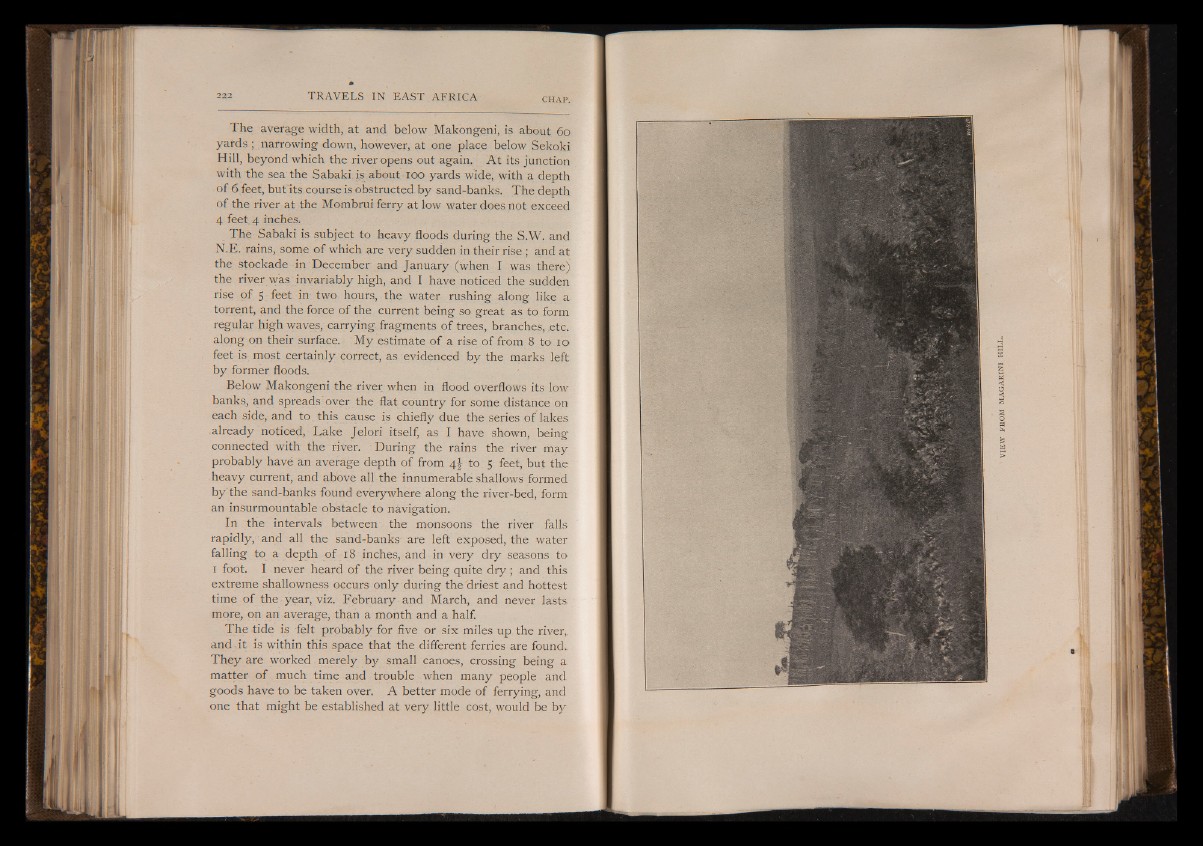
The average width, at and below Makongeni, is about 60
yards ; narrowing down, however, at one place below Sekoki
Hill, beyond which the river opens out again. A t its junction
with the sea the Sabaki is about 100 yards wide, with a depth
of 6 feet, but its course is obstructed by sand-banks. The depth
of the river at the Mombrui ferry at low water does not exceed
4 feet 4 inches.
Thè Sabaki is subject to heavy floods during the S.W. and
N.E. rains, some of which are very sudden in their rise ; and at
the stockade in December and January (when I was there)
the river was invariably high, and I have noticed the sudden
rise of 5 feet in two hours, the water rushing along like a
torrent, and the force of the current being so great as to form
regular high waves, carrying fragments of trees, branches, .etc.
along on their surface. My estimate of a rise of from 8 to 10
feet is most certainly correct, as evidenced by the marks left
by former floods.
Below Makongeni the river when in flood overflows its low
banks, and spreads“ over the flat country for some distance on
each side, and to this cause is chiefly due the series of lakes
already noticed, Lake Jelori itself, as I have shown, being
connected with the river. During the rains the river may
probably havé an average depth of from 4J to 5 feet, but the
heavy current, and above all the innumerable shallows formed
by the sand-banks found everywhere along the river-bed, form
an insurmountable obstacle to navigation.
In the intervals between the monsoons the river falls
rapidly, and all the sand-banks are left exposed, the water
falling to a depth of 18 inches, and in very dry seasons to.
1 foot. I never heard of the river being quite dry ; and this
extreme shallowness occurs only during the driest and hottest
time of the year, viz. February and March, and never lasts
more, on an average, than a month and a half.
The tide is felt probably for five or six miles up the river,
and it is within this space that the different ferries are found.
They are worked merely by small canoes, crossing being a
matter of much time and trouble when many people and
goods have to be taken over. A better mode of ferrying, and
one that might be established at very little cost, would be by